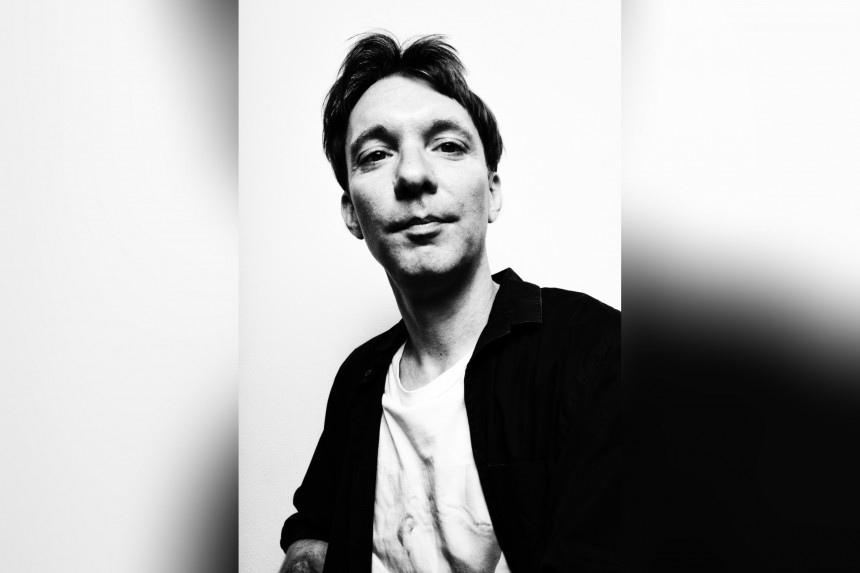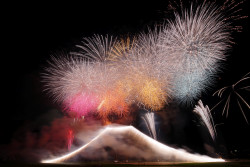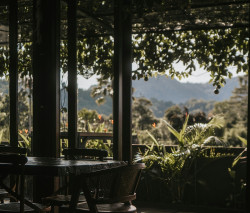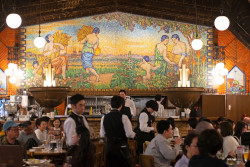
November 1, 2019
THE CREATIVE ISSUE: JÖRGEN AXELVALL
Conversing without words through a photographer's lens
By Paul McInnes
Susan Sontag, the great American polymath and photography critic, wrote, “To take a photograph is to participate in another person’s (or thing’s) mortality, vulnerability, mutability. Precisely by slicing out this moment and freezing it, all photographs testify to time’s relentless melt.” Swedish photographer and artist Jörgen Axelvall, in his expansive body of work, encapsulates Sontag’s theory with his lens pointed, always, at the here and now and the beauty of the (more often than not) male form in its prime — with the lingering realization that this will also decay and succumb to the ravages of time.
Axelvall isn’t actually a photographer; he’s an artist, poet and commentator on contemporary society seen and experienced from his time living in Sweden, New York and his adopted home of Tokyo. He arrived in the Japanese capital during the Tohoku earthquake and tsunami on March 11, 2011 and, in some ways, experienced his own personal seismic shift and transformation from photographer’s assistant in New York to out and out artist in Tokyo.
He’s a charming man, slight of build and handsome, with a particular view on Earth and its multifarious inhabitants. Leaving Sweden in his early twenties, after college, photography school and time as an assistant to a professional photographer, he felt the strong pull of New York — a city which, itself, was undergoing a kind of transformation. Alone and ambitious he put out an ad in the now sadly defunct Village Voice for a position as a photographer’s assistant and ended up, through a lot of effort and determination over his 15 years in the city, working with some of the world’s most respected photographers such as Ellen Von Unwerth, Mary Ellen Mark and Steven Sebring.
In his collaborative collection with prominent Japanese poet Mutsuo Takahashi, “Go To Become,” Axelvall focuses on the male nude form with a backdrop of forests and nature. In some ways it is reminiscent of fellow Scandinavian Lars von Trier’s films Antichrist and Melancholia. Seductively tranquil with the lens focused on humanity and the environment, it’s a stunning collection of images and words. Takahashi’s poetry accompany, beautifully, Axelvall’s images with short stanzas such as:
Treading upon grass
Crossing water
Shaded by many shadows
Where shall I go?
To where I can be myself
“Go To Become” was a recognizable artistic step up from his first monograph published in 2013, shot in New York, titled “Instant Moments” which detailed his emerging days as an émigré in the U.S. Party shots, letters and mementos from a time now lost, it resembles, in some ways, the work of French artist Sophie Calle — who combines photography, diary entries and documents to illustrate her experiences and conflicted psyche.
Axelvall is a wonderful raconteur. His story about how he developed his relationship with Park Hyatt Tokyo is indicative of his work ethic. Having lived near the hotel or passed by it throughout the years, the Swede took numerous photographs of the renowned structure and contemporary emblem of the Shinjuku skyline. It became something of an obsession. One day, he entered the lobby and explained to the staff what he had been doing and the hotel was, obviously, flattered then transfixed by the beauty of his images. So much so that Park Hyatt employees have Axelvall’s image of the hotel emblazoned on their name cards. He was also recently commissioned to shoot Sofia Coppola’s (who famously filmed several scenes of Lost in Translation there) portrait in celebration of the hotel’s 25th anniversary this year. He also published a book of his Park Hyatt series titled “I was looking for Park Hyatt Tokyo.”
Axelvall, who in 2013 won the prestigious New Exposure Award presented by Vogue and Bottega Veneta, writes in some explanatory notes for his upcoming exhibition “And I reminisce” at Ken Nakahashi Gallery in Shinjuku that, “My projects have been many and varied since but I cannot and will not stop taking pictures of friends, lovers and boys I feel affection for. It’s a way of getting to know them better, to get a deeper understanding, to love more. The camera allows me to converse without words, to gaze into somebody’s mind and soul. I watch, study and try to capture the beauty I see.”
Exhibition Details:
“And I reminisce”
November 1 – November 30
Ken Nakahashi Gallery Tokyo
“And I reminisce” is Axelvall’s desire to recapture time. Not searching for an idyllic past that inaccurately occurred, instead searching for clues and junctions that would have altered his present if acknowledged or acted upon earlier. On view is a life project still in progress; the exhibited artworks represent a visual testament to his discovery, explained and reflected upon in a short story penned by Axelvall.
Feature image by Stephan Jarvis







